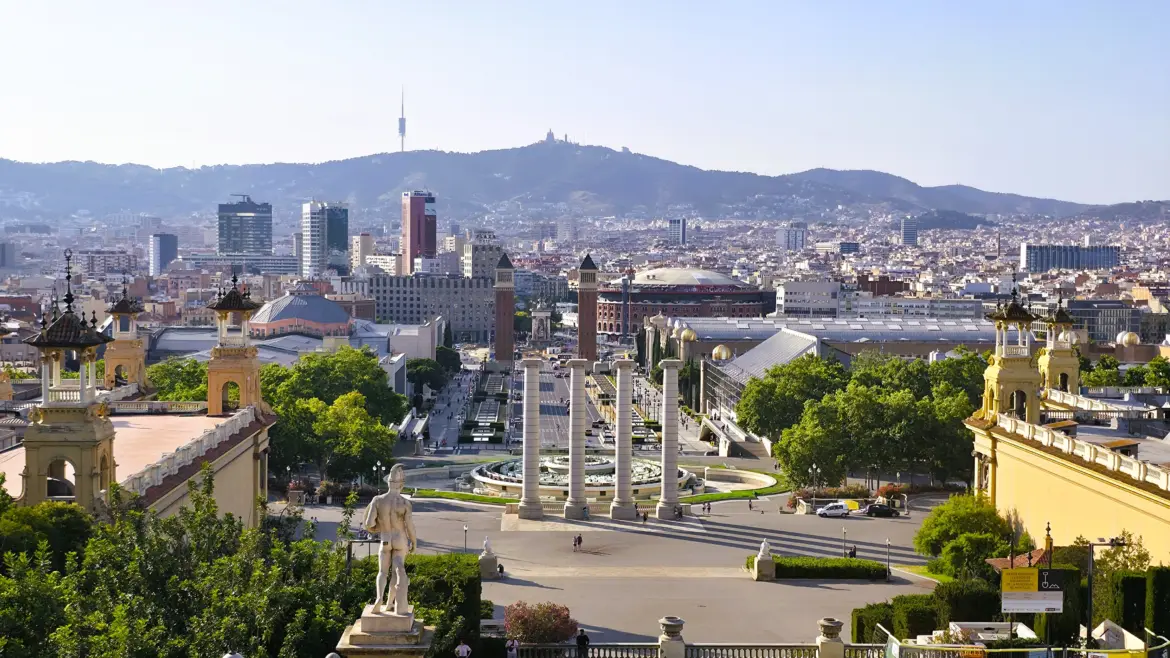Hola, travel enthusiasts! As I made my way down from Montjuïc, passing the grand stairways of the Palau Nacional and the terrace overlooking the city, I suddenly found myself before Plaça d’Espanya – vast, elegant, and alive with movement. From above, it appeared like a grand compass of Barcelona, every avenue radiating outward toward a different part of the city. The fountain shimmered at its center, framed by the Venetian Towers, with the hum of buses, laughter, and music drifting through the air.
It’s one of those places that captures Barcelona’s modern soul while honoring its past – a meeting point of cultures, a gateway from Montjuïc’s serene heights to the city’s vibrant rhythm, and an open-air museum of early 20th-century ambition.
A Square Born for a World Fair
Plaça d’Espanya was built for the 1929 International Exposition, a world’s fair that transformed Barcelona’s skyline. The city wanted a grand entrance to Montjuïc, where pavilions from around the world would celebrate innovation, art, and architecture.
The design came from architects Josep Puig i Cadafalch and Guillem Busquets, later completed by Antoni Darder after political changes led to their removal from the project. The goal was to create a square that mirrored the great piazzas of Europe, with wide avenues, monumental fountains, and a panoramic view leading straight to the Palau Nacional (now the MNAC – National Art Museum of Catalonia).
The result is one of Barcelona’s most elegant spaces: a circular plaza framed by six avenues, dominated by classical symmetry yet softened by Mediterranean light.
What to See Around Plaça d’Espanya
1. The Monumental Fountain
At the center of the square stands a spectacular fountain designed by Josep Maria Jujol, one of Gaudí’s most imaginative collaborators. Inaugurated in 1929, it was conceived as a poetic tribute to Spain’s geography and virtues.
- The central column symbolizes the Iberian Peninsula, surrounded by water basins representing the Ebro, Tagus, and Guadalquivir rivers, whose waters sustain and connect the land.
- Around the base, sculptural groups personify Abundance, Health, and Navigation – allegories that seem to shimmer in the Mediterranean light.
- Bronze figures and stone reliefs celebrate Spain’s cultural legacy, honoring writers, saints, and explorers whose stories shaped its identity.
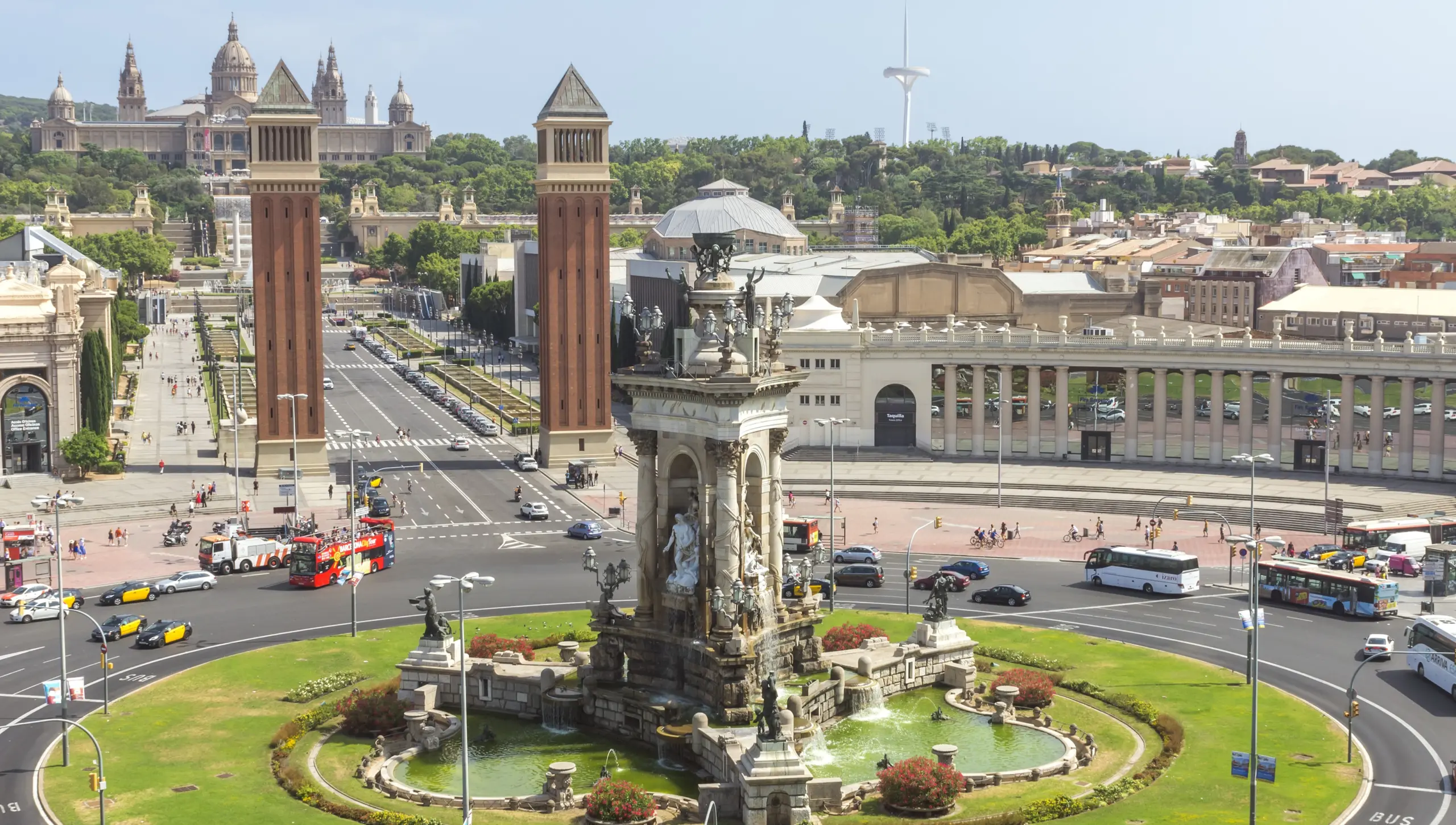
As you walk around, notice how the Magic Fountain of Montjuïc, visible just beyond the Venetian Towers, feels like a distant echo of Jujol’s masterpiece, water and light continuing the dialogue between past and present.
2. The Venetian Towers
Flanking the avenue leading toward Montjuïc are two 47-meter towers inspired by St. Mark’s Campanile in Venice. Designed by Ramon Reventós, they once served as gateways to the International Exposition.
Their red-brick façades and slender design have become symbolic of Barcelona’s architectural elegance, merging Catalan craftsmanship with cosmopolitan flair.
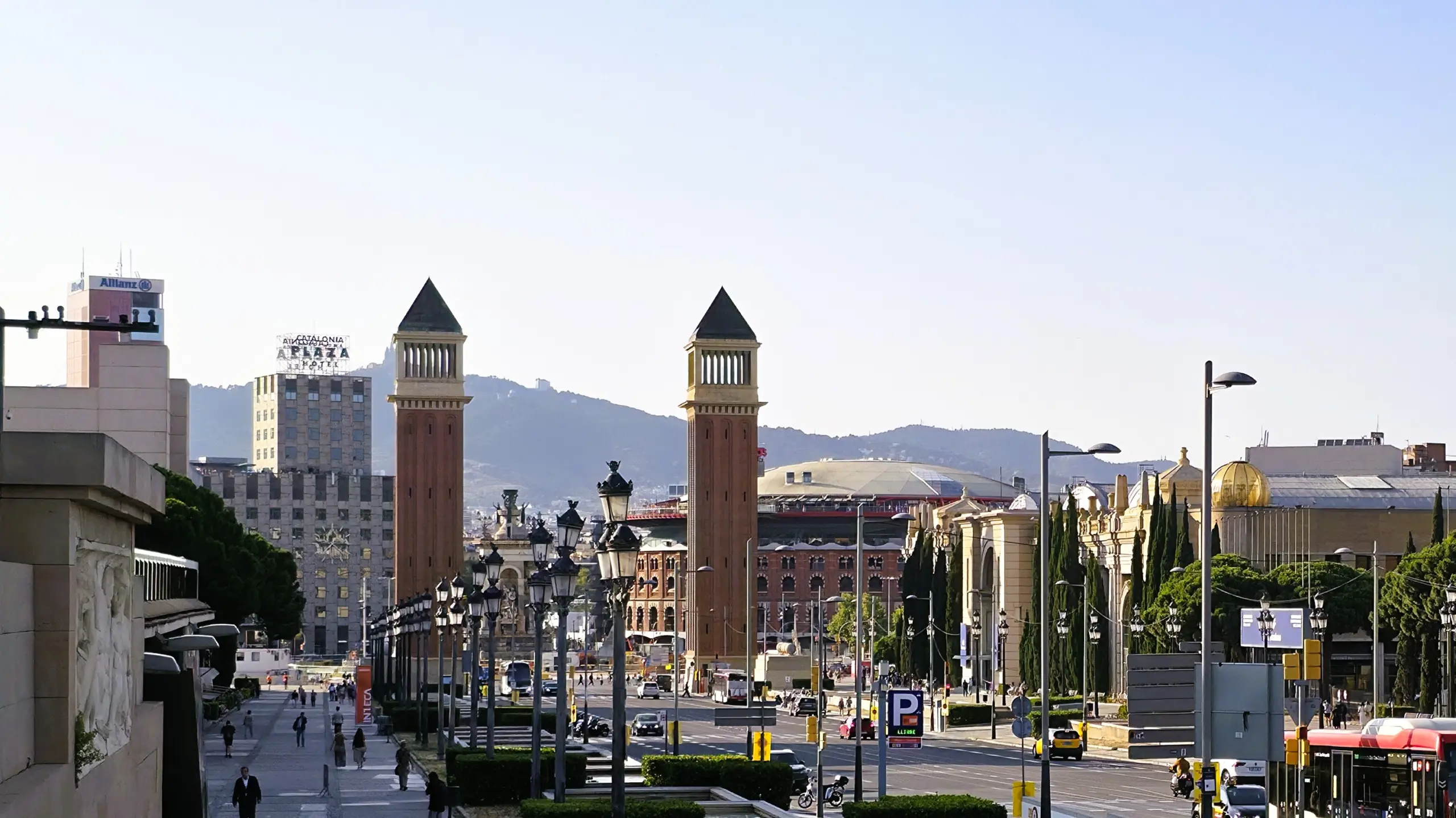
3. The Palau Nacional & MNAC
In the distance, crowning Montjuïc’s slope, rises the Palau Nacional, a monumental palace built for the 1929 Expo. Today it houses the National Art Museum of Catalonia (MNAC), with masterpieces spanning Romanesque frescoes to Catalan Modernism. From Plaça d’Espanya, its cascading stairways and domes form one of the city’s most iconic views, especially when illuminated at night.
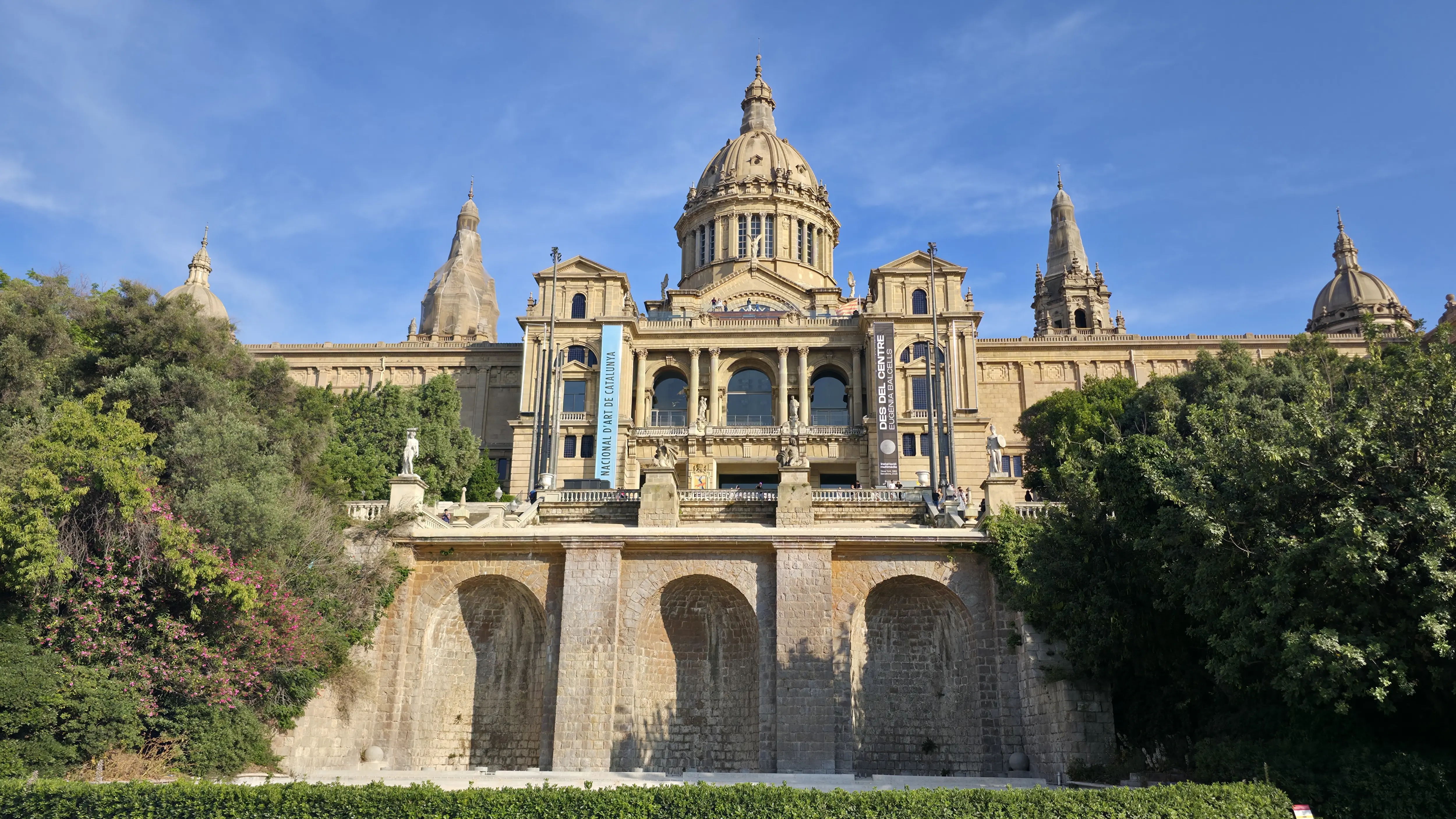
4. The Magic Fountain of Montjuïc
Just beyond the Venetian Towers lies the Magic Fountain, created by Carles Buïgas for the 1929 Exposition. When active, it dances nightly in a symphony of color, music, and light, a dazzling performance that feels both nostalgic and futuristic. Though currently paused due to drought measures, it’s best enjoyed from the steps of MNAC at sunset, one of the most cinematic views in Barcelona!
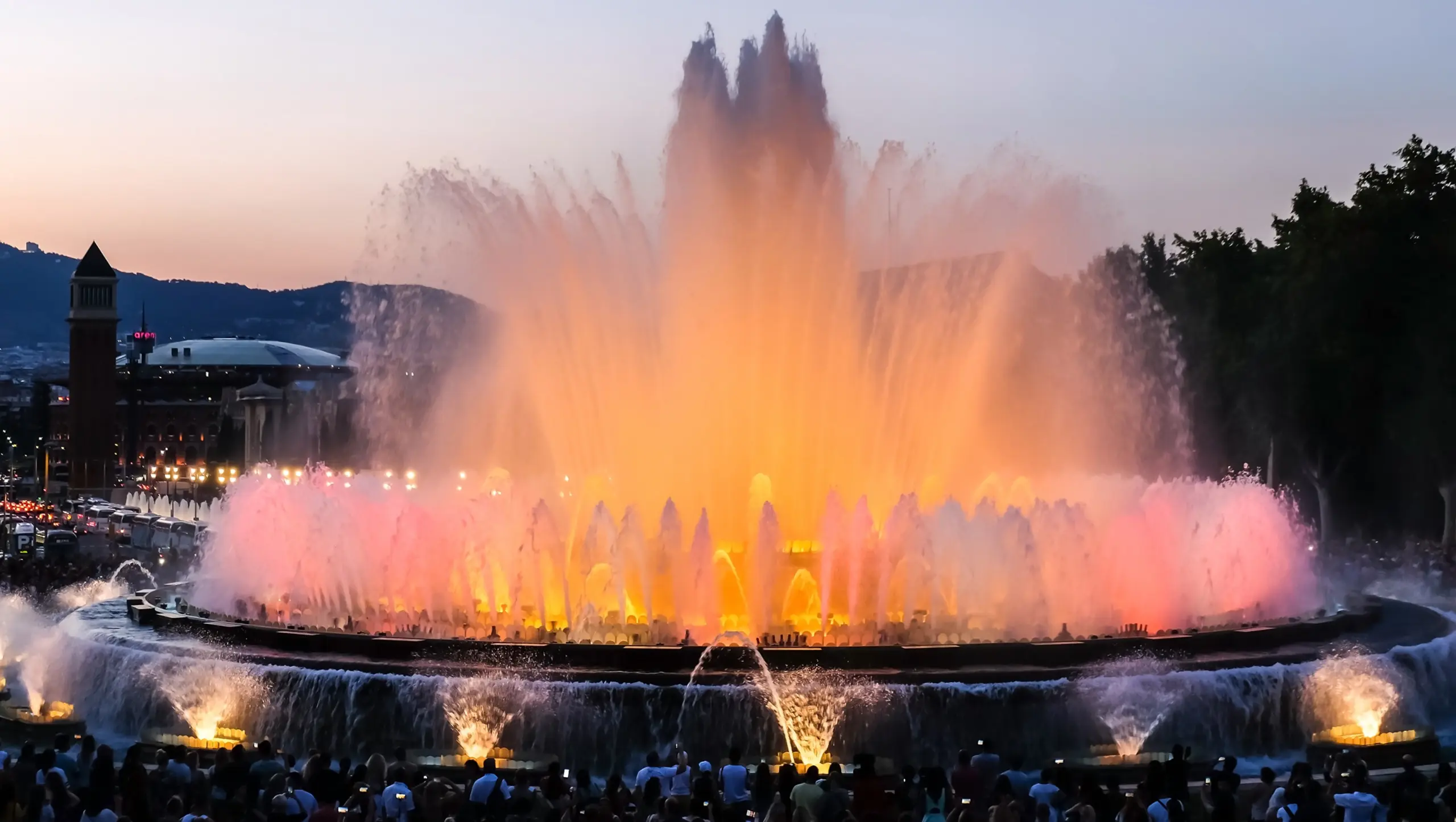
5. Arenas de Barcelona
Once a bullring, this circular structure was transformed in 2011 into a shopping and cultural center. Its Moorish-inspired façade was preserved, while a modern glass dome now covers the interior. Take the elevator to the rooftop terrace for panoramic views of Plaça d’Espanya, Montjuïc, and Tibidabo in the distance. It’s especially magical at golden hour.
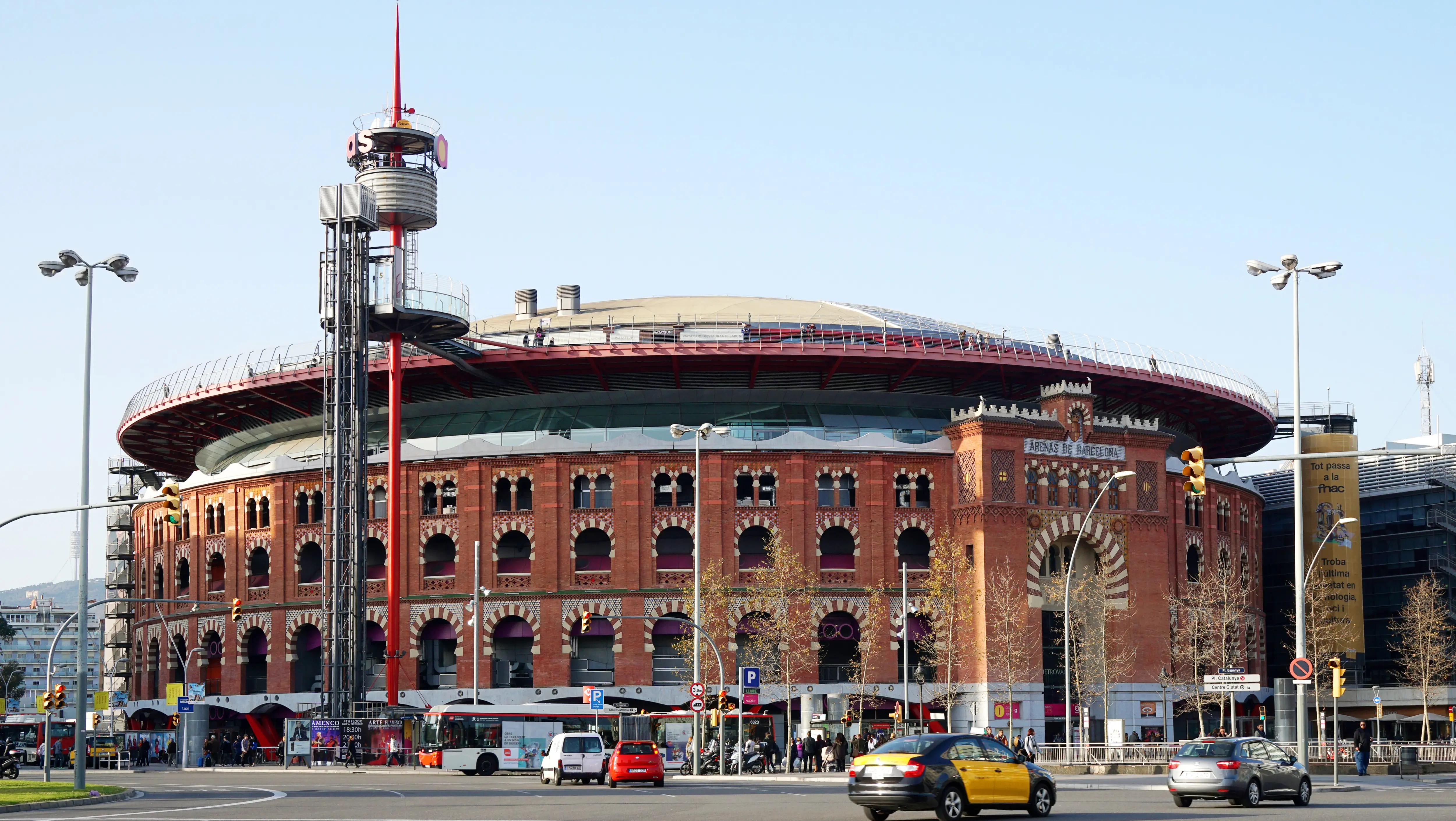
Through My Eyes
I visited Plaça d’Espanya late in the afternoon, when the sun dipped low and the terracotta towers glowed like embers. The air hummed with life – street musicians by the metro, couples holding hands, children chasing pigeons. From the Arenas rooftop, I watched the Magic Fountain begin to shimmer to life, the Palau Nacional glowing above it. For a moment, the entire city seemed to breathe in rhythm – fountains, traffic, laughter, light – all part of one great choreography.
There’s something deeply moving about being in a space that was built to celebrate progress, yet still feels timeless. Plaça d’Espanya is both a stage and a mirror – it reflects Barcelona’s optimism, creativity, and endless energy.
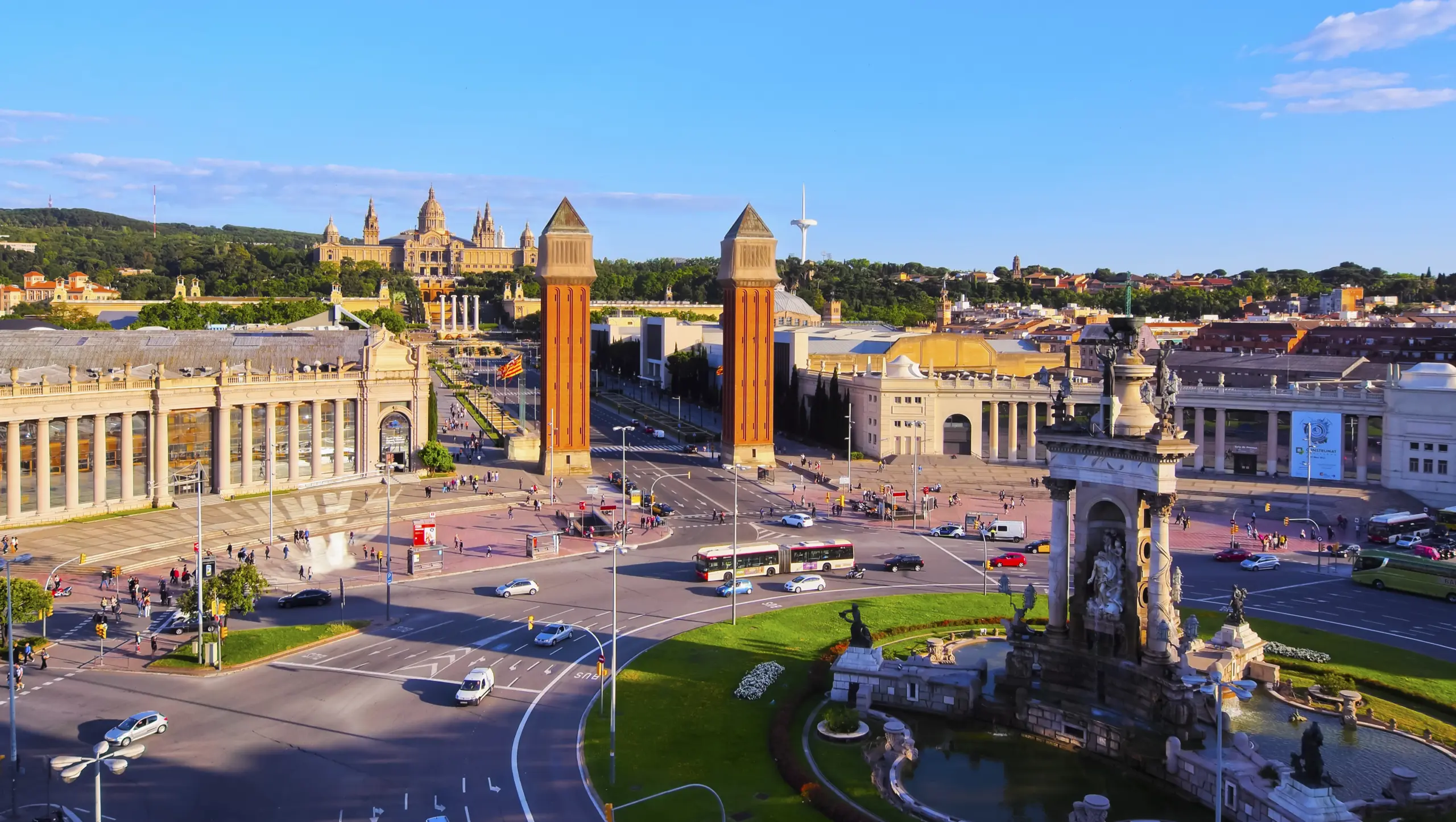
Practical Tips
- Location: At the crossroads of Eixample and Montjuïc.
- Metro: Lines L1, L3, and L8 – stop: Espanya.
- Bus: Multiple routes, including Bus 150 to Montjuïc and the Aerobus to the airport.
- Best Time to Visit: Late afternoon for golden light; Magic Fountain shows are paused until fall 2025 (check barcelona.cat).
- Rooftop Views: Free 360º views from Arenas de Barcelona via interior elevators.
- Nearby Attractions: MNAC, Magic Fountain, Montjuïc Park, CaixaForum, and Poble Espanyol.
Final Thoughts
Plaça d’Espanya isn’t just a traffic circle, it’s the gateway to Barcelona’s imagination. Built to welcome the world in 1929, it continues to do so every single day – through art, architecture, and the simple poetry of city life.
As evening falls and lights ripple across the fountains, you can feel Barcelona’s dual nature: grand yet human, bold yet serene. Standing there, watching the city come alive, I thought – this is the Barcelona I love best: where every street leads not just somewhere, but toward something beautiful.
xoxo,
Bubbly🎈

